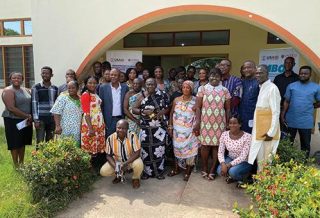FEATURE ARTICLE
How We Can Bridge The Cultural Gap
Stages of change outline a path toward equity
By Gregory Peters
Categories: Continuous improvement, EquityOctober 2016
Vol. 37 No. 5
Read the remaining content with membership access. Join or log in below to continue.
Sed ut perspiciatis unde omnis iste natus error sit voluptatem accusantium doloremque laudantium, totam rem aperiam, eaque ipsa quae ab illo inventore veritatis et quasi architecto beatae vitae dicta sunt explicabo. Nemo enim ipsam voluptatem quia voluptas sit aspernatur aut odit aut fugit, sed quia consequuntur magni dolores eos qui ratione voluptatem sequi nesciunt. Neque porro quisquam est, qui dolorem ipsum quia dolor sit amet, consectetur, adipisci velit, sed quia non numquam eius modi tempora incidunt ut labore et dolore magnam aliquam quaerat voluptatem.
What is an equity walk?
An equity walk is a collaborative process in which school teams gather observational data to take a pulse of the school within a brief snapshot of time. The data serve as one narrative used to explore an agreed-upon focus, such as a critical incident or a larger problem of practice, that contributes to an identified, student-related inequity within the school. While this is a facilitated process, there are general guidelines:
- The team visits every classroom together.
- Each visit lasts at least three minutes. The team spends a few minutes after leaving each classroom to share and calibrate examples of evidence.
- Visits are not classroom observations of any specific teacher, but rather an observation of a school or program as a whole.
In one equity walk, a team chose to focus on patterns of student participation by race and gender for a grade level where an experience gap and achievement gap persisted for its male students of color.
Before conducting the equity walk, the team calibrated examples of authentic, observational data and discussed hopes, fears, and biases that may surface during the observations. They prioritized looking at seating and grouping arrangements as well as coding student-to-student and student- to-teacher discourse.
After an equity walk is complete, the team compiles, shares, and discusses individual observations to identify patterns and outliers and reflect on the findings and related implications for the school and its leadership. During this time, the team also determines next steps to share the equity walk synthesis and analysis with the larger school community.
One school’s strategy that proved particularly effective was to share its equity walk data with a series of probing questions at staff meetings following the walk so that teachers could reflect on the data in relation to their individual practices.
References
Center for Public Education. (2007). The United States of education: The changing demographics of the United States and their schools. Alexandria, VA: Author.
Hilliard, A.G., III. (1995). The maroon within us: Essays on African American community socialization. Baltimore, MD: Black Classic Press.
Peters, G. (2012). Teacher transformation: Transcending hegemonic roots (Unpublished doctoral dissertation). Department of Educational Leadership, California State University, East Bay, CA.
Gregory Peters (gpeter@sfcess.org) is executive director of the San Francisco Coalition of Essential Small Schools.
Categories: Continuous improvement, Equity
Recent Issues
WHERE TECHNOLOGY CAN TAKE US
April 2024
Technology is both a topic and a tool for professional learning. This...
EVALUATING PROFESSIONAL LEARNING
February 2024
How do you know your professional learning is working? This issue digs...
TAKING THE NEXT STEP
December 2023
Professional learning can open up new roles and challenges and help...
REACHING ALL LEARNERS
October 2023
Both special education and general education teachers need support to help...










